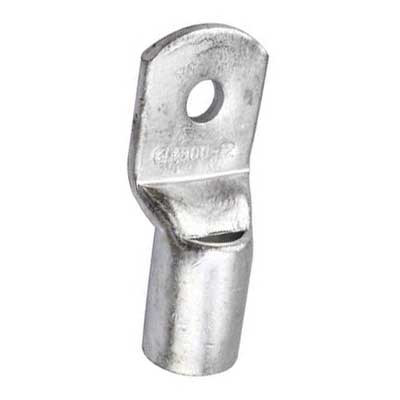 Add My Company
Add My Company
The significance of cable lugs in the electrical industry cannot be overstated, as their design and proper installation are essential for optimal system functionality. We’ll explore all aspects of this fundamental element, from types and sizes to material selection. To get the most out of your cable lug it’s important to understand its usage along with size and material options available before heading into application phase, let us show you just how much they can do!
Key Takeaways
- Cable lugs offer superior conductivity and longevity for a variety of electrical applications.
- Material selection is essential to guarantee secure, dependable connections with minimal installation time and costs.
- Proper sizing, termination techniques, preparation of cable & securing the connection are key steps in creating safe and reliable electrical systems.
Understanding Cable Lugs: Types and Applications

The importance of cable lugs cannot be overstated. They are used to securely connect cables with electrical appliances, other devices or even more cords and come in various designs and sizes. A material choice is extremely critical since it determines the power as well as durability of such connections, thus guaranteeing a dependable bond between them all. Copper tube terminals, earth rod connectors along with additional types contribute greatly to understanding these essential items better whilst ensuring their proper use for designated purposes respectively due to variation in size that was designed specifically for individual applications.
Copper Tube Terminals
Copper tube terminals are designed to be the perfect choice for various electrical connections, especially in high voltage systems. They offer great conductivity and exceptional durability due to their copper material composition, which makes them suitable sizes ranging from millimeters (mm) manufactured according to British Standards (BS). Whether you want reliable connection equipment or just require it at home, copper tubes provide a reliable means of achieving that goal.
These superior quality terminals have also been developed with long-term performance in mind. Providing steady functionality over time without diminishing efficiency thanks again largely attributed to its primary component being the purest grade of Copper. For this reason, they can often handle even harsh environmental conditions while still offering optimum connectivity regardless of the application area involved too.
A bell mouth design is also advantageous as it helps to reduce chafing if they're subject to any vibration.
Other Cable Lug Types
Besides copper tube terminals, there's a wider variety of cable lug types out there, each with their own special perks and ideal use cases. Take aluminum lugs, for instance. They're known for their lightweight build, resistance to corrosion, and solid electrical conductivity. You'll often find them in situations like automotive wiring or low voltage systems where these traits really shine.
Bimetallic lugs provide remarkable durability plus both high levels of electric conduction while also being able to cope with extremely harsh temperatures. These kinds of components often serve industrial purposes like those found at power plants or similar massive sites requiring parts which have this caliber toughness too them.
The Importance of Material Selection in Cable Lugs

Material selection is essential for cable lugs to perform safely, reliably and durably. The most popular choice is manufactured from seamless copper tube to BS EN12449: 1999 (shown above).
Copper tube terminals and connectors are renowned for their superior electrical conductivity, corrosion resistance as well as durability. Other materials used in production of these components include brass or aluminum, each having their own advantages versus drawbacks that must be weighed before making an informed choice when it comes to selecting a material suitable for your particular situation. Using the right kind of material plays an important role in successful implementation of electrical connections with quality assurance through wire termination solutions such as those provided by lugs made from resilient copper tubes features desired insulation properties against natural elements like water damage.
Sizing and Terminating Cable Lugs
The right choice of size and correct termination are critical for making sure cable lugs have an effective connection. If the lug is not sized or attached correctly, it can result in a weak link that could cause electrical arcing, overheating and even danger to occur. Make sure you match the right cable lug size with the cable you're using, if you're cable is 10mm2, then you'll need a 10mm2 lug to fit on it. Then you just need to match the hole size up with screw or thread size that its connecting to.
Proper Termination Techniques
When terminating lugs for cables, it is important to consider the type and size of connection as well as the environment in which they will be used. Three techniques commonly employed are crimping, soldering or mechanical connections. Crimping offers a fast, secure attachment, but can often lack inspection capabilities, making them prone to corrosion damage over time. Soldering provides improved dependability, although it takes more effort than other methods. Plus, appropriate equipment needs to be available onsite if needed at any given moment. Mechanical links offer high reliability though require special tools plus careful observation upon completion – all of which work together towards maximising safety standards and electrical system efficiency overall.
Cable Lug Installation Tips
Properly installing cable lugs is essential for establishing a dependable and secure electrical connection that's built to last. To ensure success, the process includes preparing the cables, attaching them securely to the lug and thoroughly testing/inspecting all elements of installation. These points can assist in avoiding any potential risks or complications that could emerge from these connections while also increasing safety as well as reliability throughout your system.
To provide more specific instructions on how best to prepare cables, make sure they are firmly attached to each respective lug during assembly with proper security procedures taken into account when setting up everything - we have provided detailed guidance below which should be kept at heart when working so you will obtain an effective cable-lug setup plus get peace of mind knowing it’s done correctly.
Preparing the Cable
Cable preparation is critical to ensure an efficient and secure electrical connection. Stripping the insulation off using either wire strippers or a knife, cleaning the conductor with a brush or sandpaper and selecting the correct lug size based on an applicable chart are all necessary steps in this process. These measures help create optimal performance levels for your system that will last by making sure it’s eligible to receive proper connections from its cable components.
Securing the Connection
To ensure a safe connection between the cable and lug, proper crimping or soldering methods must be employed as well as fasteners torqued to appropriate specifications. The use of adequate techniques guarantees an effective union that deters electrical arcing, overheating, or any potential accidents from occurring.
It is equally important when connecting these two elements to apply accurate torque levels in order for their bond to remain secure and trustworthy. This contributes immensely towards overall safety measures concerning your electric setup.
Testing and Inspection
To guarantee the integrity and safety of cable lugs, it is essential to perform tests and inspections on them. Visual analysis as well as electrical continuity assessment can be done while torque testing should also be conducted for such connections.
Taking these steps allows any potential issues to get identified quickly. Hence, allowing you to maintain your electrical system’s reliability and performance standards. With enhancing its security level. As a result, regular inspection of all associated cables must not go overlooked when dealing with lug links if you want safe outcomes from your overall electric circuit layout.
Summary
Throughout this post, we have studied the world of cable lugs and their many types and usages. It is essential to carefully consider material selection, size/termination accuracy, as well as installation processes when working with these components in order to guarantee a safe electrical connection. By understanding different lug types for distinct applications, you can make sound decisions when using them in your wiring systems.
Cable lugs are indispensable parts of any electricity network from safety standpoints but also effectiveness-wise. That being said, it is necessary for anyone dealing with such connections to be familiarized with its various aspects including type variety, purpose per each one plus setup directions so an optimum output may be obtained. Following these suggestions detailed herein will assist ensure stable quality links which lead to greater efficiency all across the system.
Frequently Asked Questions
What is a cable lug used for?
Cable lugs are created to offer a secure connection, available in many different sizes and materials like aluminum, stainless steel or copper. They are specifically designed for joining cables with electric appliances or other mechanisms such as the ends of jumper cables linking wires with an automotive battery. The kind of lug used will depend on what type of cable is needed and the use it was meant for.
What are the types of lugs?
Cable lugs come in a variety of sizes and types. The un-insulated copper tube terminals have a fairly basic design while the smaller ring type, pin type, fork, blade, male/female connectors which are available in red, blue & yellow colours provide more choices dependent on your application. These smaller cable accessories are fitted onto the cable with a crimping tool. Each colour denotes that they can be used with a particular size which is:
- Red - 0.5-1.5mm
- Blue - 1.5-2.5mm
- Yellow - 4-6mm

How do I choose cable lugs?
Choosing the right cable lug depends on the conductor class being processed. DIN EN 60228 provides a variety of options, such as compression cable lugs to DIN 46235 for Class 1, 2, 5 and 6 conductors and tubular cable lugs for Class 2 conductors.
Additionally, there are lugs with fork-shaped handles for screw terminals, closed rings for bolt applications, and pins or flat handles for compressive and blade-tipped terminals.
What is an earth lug?
Earth lugs are mainly composed of copper and their sizes range from 6 to 4 gauge up to 1/0, 2/0, 3/0 as well as 4/0 gauges. These electrical components provide a path for the flow of electricity between two or more wires and can be used in many different applications such as car building projects or wiring systems installations requiring grounding cables connection points. Earth lugs serve an essential role in guaranteeing that there is safe energy circulation around these various objects and constructions.
Why is material selection important in cable lugs?
When choosing lugs for cables, selecting the right material is an important factor in ensuring a secure and reliable connection. Depending on where it will be installed and what external conditions it must endure (temperature fluctuation, vibration, etc.), different materials should be taken into consideration to get the best performance out of this component. Making sure that you pick something up to scratch can guarantee long-lasting durability as well as safety from any foreseeable dangers when using cable lugs.
For more information on Cable Lugs: The Benefits of Copper Tube Terminals talk to Expert Electrical Supplies Ltd

